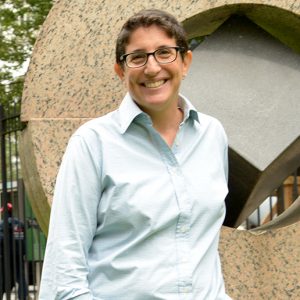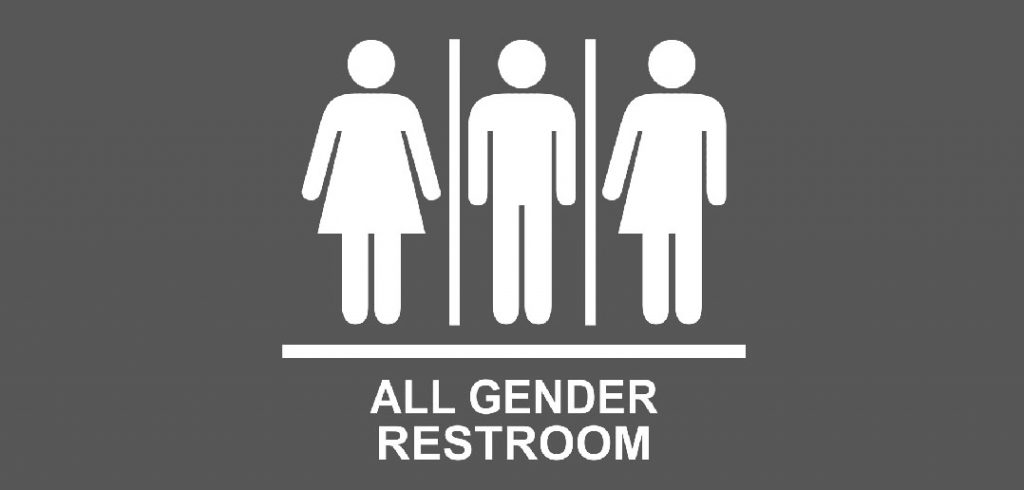A Fordham professor’s new study in the Journal of Youth and Adolescence has found that ensuring safe access to bathrooms and other school facilities for trans students is vital to their education.

“It seems obvious, but when you control for the safety, the students actually performed better,” said Laura Wernick, Ph.D., the study’s principal investigator and an assistant professor in the Graduate School of Social Service (GSS). “And ‘safe’ is the keyword here, because no matter where you are in the political spectrum you wouldn’t want kids beating each other up.”
The study, “Gender Identity Disparities in Bathroom Safety and Wellbeing Among High School Students,” employed a “climate survey” conducted in 2014 of five public high schools in southeast Michigan to examine the relationship between students’ gender identity, how safe they felt using bathroom facilities, and their schoolwork. The article was co-authored with her research assistant Alex Kulick, Ph.D., and Matthew Chin, Ph.D, assistant professor of social work at GSS.
“The experience that trans youth have with bathrooms has an impact on their grades and their self esteem,” she said. “This is such an important bodily function, that it’s going to have an effect when you place a student in a situation where they have to hold it in because they’re afraid.”
Very few empirical studies have focused on this issue within the context of high schools, said Wernick.
The study’s questionnaire was generated by the students themselves in a process known as community-based participatory action research. The teens had participated in a study before, but Wernick said they felt the questions hadn’t addressed all their concerns. Working with Wernick, the teens created an organizing model that would ultimately cross multiple identities—race, class, gender, and religion, to name a few.
“It’s an interesting model because we have young people from the schools, and they can word the questions to that particular school,” she said. “It speaks to the power of youth taking leadership.”
Through a coalition of several queer/straight alliance clubs in and around Detroit, the investigators were able to survey two rural, two suburban, and one urban high school.
In determining each school’s climate, the study gauged the extent to which the young people experienced microaggressions or outright slurs, physical harassment, or both. An earlier version of the study was conducted in 2007, but this 2014 survey was revised to incorporate more more questions on gender identity, bathrooms, and self-esteem issues.
In the three years that have passed from the initial survey to its publication this month, the nation has seen a sea change in politics, not all of it favorable to transgender students, noted Wernick.
“What I’m hearing from the young people is that the current climate is raising a lot more concerns, there’s a bit of a backlash,” said Wernick. However, some schools are moving forward to protect the teens, she said.
Wernick said it was a “negotiated process” getting the study, which was conducted during class time, in through the school administrations. “Some schools were excited, some were a little wary, and some clearly didn’t want to go with it.”
Although the survey was limited to 1,000 students in southeast Michigan, Wernick said the rural-suburban-urban context makes it a microcosm.
“It’s an interesting snapshot of the United States.”


